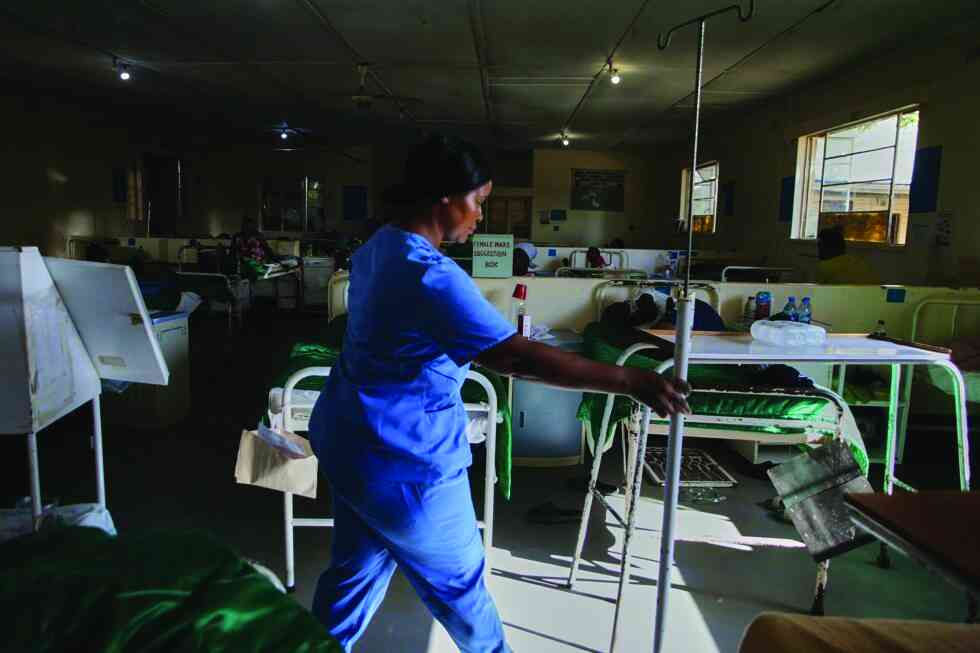
ABOUT 65% of Zimbabwe’s manufacturing industries is made up of small firms, a new report showed.
In its 2022 Manufacturing Sector Survey, the Confederation of Zimbabwe Industries said the bulk of the country’s old and large manufacturing firm had fizzled out of the domestic landscape.
The CZI did not explain why new and small firms were now dominating the sector.
But its report showed that large scale manufacturing firms with at least 75 workers were decreasing in numbers, making up 16% of the sector.
It said medium scale producers, with at most 75 workers, made up 4% of the sector.
The data could help explain sporadic shortages of some domestic goods on Zimbabwe’s supermarket shelves, where South African merchandise dominate, officials said.
It may also help explain the deadly effects of 23 years of de-industrialisation in Zimbabwe.
The CZI said 26% of 4 552 manufacturing firms only started between six and 10 years ago, with 19% having been in operation for less than five years.
- Mthuli Ncube abandons struggling consumers
- Fears of jobs carnage as crisis deepens
- Fresh warning over bank rate hikes
- Police admit that money changers are untouchable
Keep Reading
Only 1% of Zimbabwe’s manufacturing industry was made up of companies spanning 100 years, according to the report.
“The bulk of manufacturing sector firms fall under small category on employment consideration,” the CZI said in its report, which showed capacity utilisation in the industry dropping to 56,1% during the review period.
This figure was 56,3% during the comparable period in 2021.
“Those that have been operating for six to ten years were the majority at 26%,” the CZI said.
The report showed that following extensive de – industrialisation in the past 23 years, manufacturing firms older than 50 years only makes up 9% of outfits in the industry.
The sector has struggled to reach the peak of 57,2% attained in 2012, three years after the country ditched its own currency and dollarised.
However, industrial carnage rattled the entire economy around the same time, with over 55 000 workers losing jobs and 5 600 firm closures between 2011 and 2013, according to the Ministry of Finance.
The highest capacity utilisation recorded since 2012 was the 56,3% in 2021, which, ironically coincided with the peak of Covid – 19 induced hard lockdowns.
The report said there were significant investments made into the manufacturing industry in 2022.
“About 40% of firms invested in 2022, an increase from 38% in 2021,” the report said.
“These firms (that invested) expanded their capacity by 30%. In 2021, such firms added 26% capacity. About US$101 million was invested, a decrease from US$147 million in 2021,” added CZI.
In an interview with businessDigest, Industry and Commerce Minister Sekai Nzenza said Zimbabwe’s macroeconomic environment helped firms.
“I am pleased to note that the CZI 2022 annual manufacturing sector survey results were based on 409 manufacturing firms, inclusive of both CZI and non-CZI members. This is a representative sample, good enough to provide a realistic outlook of our manufacturing sector,” Nzenza said.
“I am also advised that the survey was inclusive, covering all firm sizes with about 65% being small entities, 16% being medium and 15% large firms. The survey also reveals that most of the firms indicated that they have been operating between six to 10 years. This undoubtedly indicates business confidence by firms under the prevailing stable macroeconomic environment. The robust fiscal and monetary policies have managed to curb the runaway inflation and exchange rate disparities,” she said.
According to the survey report, capacity utilisation in medium-scale firms was 61%, while the small-scale firms had a lower level of capacity utilisation at 53%.
But, CZI president Kurai Matsheza said capacity utilisation was basically stagnant.
“If you look at our manufacturing results, it says ‘Fortunes with Modest Growth’. It is a number of good things and a number of issues that are pressure points that still need attention. But, overall, at that 56, 1% you can take it as a standstill position,” he said.
“And in this environment, it is a positive development, more so, when you look at the issues we were faced with towards the end of last year, which is in the last quarter, like the power issues. They really started hitting our members hard and coupled to that most of our growth or more volume came up in the last quarter and this is where we were hit.”











